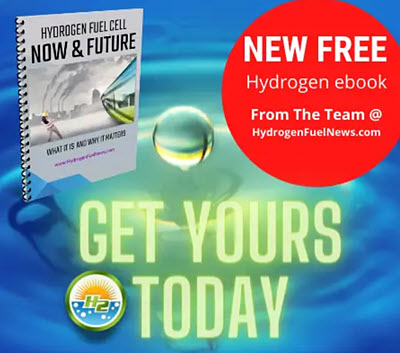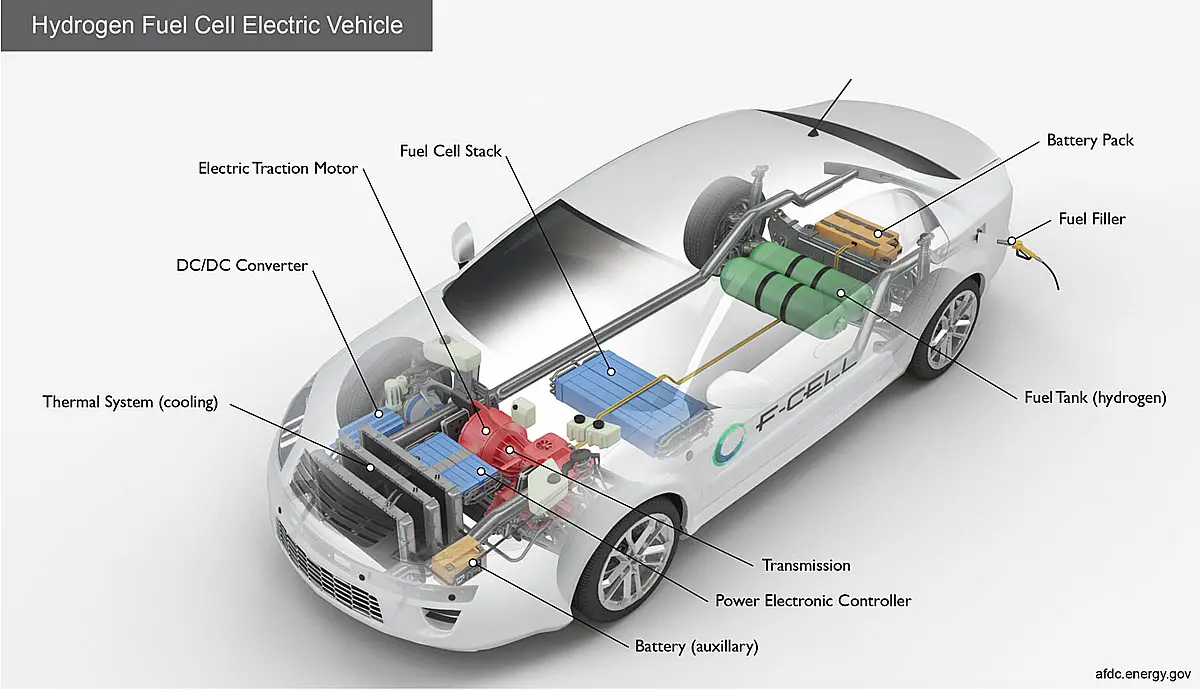
How safe are hydrogen fuel cell cars in a crash?
May 22, 2023Cars powered by gasoline need firewalls to protect from fire, but what about safety in alternative fuels?
Hydrogen fuel cell cars are becoming increasingly promising as the technology develops, particularly in the shipping and goods transportation industries as well as industries such as mining.
That said, one of the main hurdles faced by this alternative energy is in perception of its safety.
There are currently only a few types of hydrogen cars around the world. When it comes to passenger cars, the focus has been greatly directed toward rechargeable electric battery powered options. Still, there are heavier trucks, ships, trams, trains and machinery powered by H2.
Moreover, there are only a handful of cars available, such as the Hyundai Nexo and the Toyota Mirai. They each have storage tanks for the H2 and function by converting it into electricity which powers their drive wheels. The only emission resulting from this process is water, making this it eco-friendly and attractive for that reason.
UPDATED LIST OF HYDROGEN CARS IN PRODUCTION 2022:
2008–2014 – Honda FCX Clarity – was discontinued when they came out with the Clarity Fuel Cell.
2013–2018 – Hyundai Tucson/ix35 Fuel Cell
2015–2022 – Toyota Mirai
2016–2021 – Honda Clarity Fuel Cell (stopped production in August of 2021 but still available for lease through 2022)
2018 – 2022 Hyundai Nexo
2022 – Toyota Mirai II
Many people fear the risk of explosion when they think of hydrogen fuel vehicles.
Though many of us think of this type of fuel as highly explosive, this is based on a common misconception. The Hindenburg is a typical example of what people consider to be the dangers associated with hydrogen, however, that disaster was caused by the fabric of the blimp and not nearly as much by the gas.
Hyundai video on how safe is hydrogen in cars and hydrogen gas stations :
In fact, many feel that H2 can be considered to be considerably safer than cars powered by gasoline. Primarily, if there is a gasoline leak, there is a mess and a significant fire risk. In the event of a hydrogen leak, the gas simply dissipates harmlessly.
Moreover, the tanks that contain H2 are thick walled and carefully designed to prevent leaking, even after a substantial crash. The tanks in the Mirai, for example, are carbon fiber wrapped and can withstand a .50 caliber bullet without suffering a leak. The Nexo are made differently but can withstand the pressure of the gas up to 10,000 psi.

*image credit U.S. Department of Energy.
The tanks in hydrogen fuel vehicles also feature relief devices that cause the gas to be vented in certain circumstances in order to avoid heat-induced explosions.
For example, should the tanks ever be punctured, the device allows for a managed venting of the gas. Sensors throughout the vehicle also work to detect unexpected gas presence to shut everything down and bring the vehicle to a stop before anything can be permitted to ignite.
Article Updated 5/22/23
The future of hydrogen combustion engine technology is promising but still requires more development, according to Toyota’s WRC boss.
Toyota has been leading the charge in the development of hydrogen combustion engine technology, and their latest venture is the GR Yaris H2 – a hydrogen-powered vehicle that has been widely tested on several World Rally Championship stages. While Toyota is committed to making the technology commercially viable, Jari-Matti Latvala, Toyota’s WRC boss, believes that there is still some way to go before it can become a realistic alternative to traditional internal combustion engines. The main challenge, according to Latvala, is increasing the range of these vehicles, as well as ensuring the safety of the tanks used to store the hydrogen fuel. Despite these challenges, Toyota remains optimistic about the future of hydrogen combustion engine technology and plans to continue its investment in this area.
In Conclusion…
Indeed, many experts believe that hydrogen fuel is actually safer than gasoline because of the way it behaves in the event of a leak. In contrast to gasoline, which poses a significant fire risk in the event of a leak, hydrogen gas dissipates harmlessly into the air. As a result, hydrogen fuel cell vehicles are designed with safety at the forefront of their engineering, including the use of thick-walled tanks and relief devices to prevent leaks or explosions. While there is still much work to be done to make hydrogen fuel cell technology commercially viable, it’s clear that this alternative energy source holds great promise for the future of transportation.



 With over 15 years of reporting hydrogen news, we are your premier source for the latest updates and insights in hydrogen and renewable energy.
With over 15 years of reporting hydrogen news, we are your premier source for the latest updates and insights in hydrogen and renewable energy.
“Sensors throughout the vehicle also work to detect unexpected gas presence to shut everything down and bring the vehicle to a stop before anything can be permitted to ignite.” And then what, call for a tow truck?
Yes, the very much same way some cars won’t let you drive with a faulty tire, or how when some fuel pumps go out, or when the tie rod snaps, or when the balljoint goes out, or when the spidergear gets chewed, or when the clutch goes out. Every car you will ever purchase will face wear issues. This car detects if the wrong gas is about to enter, and prevents that to prevent damage. Sure wish my gas car would’ve done that when my ex put sugar in the gas tank. It seems a bit hyperbole to criticize the functionality of a car because it may one day break down, or in this case, it may one day prevent function temporarily to prevent breaking down and causing a more costly repair. All these alternative fuel haters are the same. They criticize electric cars for “what happens if you run out of battery” same thing that happens when you run out of gas bozo. “What happens if your battery goes bad” same thing that happens when your engine block goes bad. “So it can just prevent me from driving” If it keeps you alive and prevents damage to your property and keeps other’s safe in the situation, during an event that you would have no awareness over, how would you even know a foreign substance is in your fuel line? Be grateful that technology is making it this far, and try to understand that every single invention to ever be dreamt starts out with many errors, and irons them out as time goes on. Gas cars were not perfect when they came out, and are far from it now, airplanes same, phones same, internet same, even your home AC. This is how we progress. Little steps at a time. Not being infants that see 40 steps forward and all they can focus on is how scary change is.
Quote :”should the tanks ever be punctured, the device allows for a managed venting of the gas.” –> I would be interested to know how can the size of the puncture be managed and how can the venting rate through such a hole be controlled?
It is all very well that the tank is robust, but what about the interconnecting pipework ? How is the likely potential to fracture in an accident managed ?
Gas simply dissipating harmlessly ? If only it was that simple ! The gas would leak to atmosphere, but depending on the scale of the leak and prevailing atmospheric conditions, there would be a physical a geographic point at which the gas would be within ideal combustible mix conditions. –> Consider a garage leak for example, or an accident in still air conditions.
Personally speaking, I think Hydrogen is more viable in large machinery and vehicles, and that due to the poor energy efficiency compared to battery EVs, is barely suitable for smaller motive plants.
It may currently offer a lighter power plant and quick fill up times, but in a few short years, battery technology will be more energy dense, lighter and as quick to charge as hydrogen.
to answer your question, a variety of valves and chambers allow for the controlled release of the gas, it can read the drop in pressure and determine the leak rate very quickly, and will adjust the pressure accordingly. I don’t know specifically about the mirai, but I do work with high pressure gasses often and it is not a difficult system to implement, and is very reliable in my experience. Gas lines, that is gasses, not petrol, are built for that robustness. Most high pressure lines are rated 3-4x what their running pressure would be, the fittings are typically double threaded and opposing so even engine rattle wouldn’t loosen them. Any pipe leading from a storage tank must have valves, so if a rupture happens somewhere in the line, the system reads the drop in pressure, and closes valves to prevent further leaking. As for the gas dissipating harmlessly, you’re right about. However, it’s also important to note that hydrogen is considered class 4 flammable, and not class 3 combustible. It would need very specific conditions to be at the right pressure, quantity, and temperature to ignite. In most cases an actual open flame near a concentrated pocket of hydrogen will ignite, and the rate at which hydrogen naturally dissipates into a majority nitrogen environment is very high, even in stagnant airflow. Part of being flammable is being high energy, and part of movement and flow is energy, is the most simplified way I can put it.
I believe you’re right about EV vs HV. However I’m leaning towards a hybrid system. Right now one of the less reliable factors of EVs is how the electricity is produced. It’s actually not better for the environment in the worst electrical grid conditions. Putting solar on the vehicle roof is affected by weather conditions. So I feel an EV HV hybrid is best. Which is exactly what HVs are already. They have batteries and they have a similar coast recharge system, it’s just not the source of drive power like in a prius or other EV gas hybrids. I feel as their systems improve it’ll be more and more of a healthy mix. Because if we can all use EVs and then even further reduce the usage of the electrical grid by hydrogen fueling, and maybe even storing the water it produces to later use the solar roof to electrolyze back into separate gasses as a slow trickle refuel. There are many things we can do to improve these systems, it just takes time, and tons of R&D
Can a regular ICE be converted to use hydrogen (H2) instead of gasoline? If this conversion is possible would it mean modifying the engine block and piston heads to prevent structural deterioration of the cylinder walls and piston heads?
What modifications would be required to the of the car body for this conversion to be carried out?
What research/ development progress has be conducted to date on this issue?